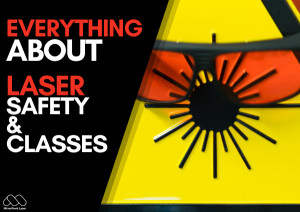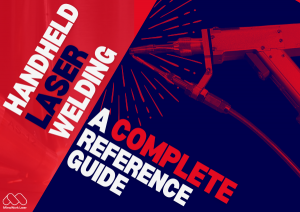Laser Welding is a Precise, Efficient Method for Joining Materials
In summary, laser welding offers high-speed, high-quality results with minimal distortion.
It’s adaptable to a wide range of materials and can be tailored to meet the specific needs of each application.
One of the great advantages of laser welding is its versatility.
It can be used to weld not only metals like aluminum, copper, and stainless steel but also a range of other materials.
Including certain thermoplastics, glasses, and composites.
This makes it useful in a variety of industries, from automotive manufacturing to electronics and even medical device production.
What is Laser Welding? [Part 2]
The Representation of Cutting-edge Future
Laser welding is a cutting-edge technology that uses a high-energy laser beam to precisely join materials, typically metals, by melting them at the point of contact.
This process creates a strong, durable bond with minimal deformation compared to traditional welding methods.
It’s fast, efficient, and capable of producing high-quality results.
The Heart of Laser Welding
At the heart of laser welding is the laser beam itself, which generates immense heat.
When the laser is focused on a metal surface, it melts the material, forming a small molten pool.
This pool solidifies rapidly, usually within milliseconds, once the laser moves away, resulting in a strong connection between the parts.
The process is highly controlled, meaning that only the areas being welded are affected, leaving the rest of the material largely unaffected.
Understanding Laser Welding
A simple way to understand laser welding is to think about a magnifying glass focusing the sun’s rays onto a small spot.
Just as the focused light can melt a piece of paper, the laser beam focuses intense energy onto a metal surface.
Causing it to melt and, in some cases, even vaporize.
Power Density of Laser Beam Welding
The power of the laser is measured in terms of power density.
Which is incredibly high—reaching millions of watts per square centimeter.
The greater the power of the laser, the faster the welding process can be, and the deeper the heat can penetrate the material.
However, higher laser power also drives up the cost of the equipment.
Making it a significant factor when considering the overall expense of the machine.
New to Laser Welding & Handheld Laser Welding?
We can Help!
Why Fiber Laser is the Best for Laser Welding?
Explaining Some Common Types of Lasers in Laser Welding
Each type of laser has its strengths and weaknesses, making them suitable for different applications in laser welding.
Fiber lasers are the most versatile and efficient, especially for metal welding.
While CO2 lasers are useful for circular workpieces but require more maintenance.
Nd:YAG lasers are ideal for specific tasks like mold repairs, but their low energy efficiency and high maintenance costs can be limiting.
Finally, diode lasers offer excellent energy efficiency but are less effective when high precision is required.
Fiber Laser Welding: Most Popular & Proven
Fiber lasers are currently the most popular and proven technology for laser welding.
They are known for their high energy efficiency, around 30%.
Which helps in better thermal management and lower operating costs.
The infrared wavelength emitted by fiber lasers is well-absorbed by most metals.
Making them highly effective for a wide range of welding tasks.
One of the biggest advantages of fiber lasers is their ability to generate and guide the laser beam through a fiber optic cable.
This allows for high beam quality, increased precision, and a higher energy density, which results in good penetration depth when welding.
Additionally, fiber lasers have minimal use of consumables, reducing maintenance costs and complexity.
They can also be integrated easily with robots or CNC machines, making them very versatile in industrial settings.
Another benefit is that there is virtually no limit to the power of fiber lasers, enabling high-performance welding even on thick materials.
CO2 Laser: Great for Certain Applications
CO2 lasers were the first type of laser used for industrial laser welding and are still used in certain applications.
These lasers emit a gas-based laser beam that cannot be guided through fiber optics.
Which results in lower beam quality compared to fiber lasers.
This makes them less precise for some welding applications.
CO2 lasers are typically used for welding circular workpieces because the laser can be fixed in position while the workpiece rotates.
However, they require more maintenance due to the frequent need for consumables like mirrors and gases.
With an average energy efficiency of around 20%, CO2 lasers are not as energy-efficient as fiber lasers.
Resulting in higher operating costs.
Nd:YAG Laser: Proven with Limitations
Nd:YAG (Neodymium-doped Yttrium Aluminum Garnet) lasers are a proven technology in laser welding
But they come with some limitations.
They have a low energy efficiency, typically around 5%.
Which leads to thermal management issues and higher operating costs.
One of the strengths of Nd:YAG lasers is their ability to guide the laser beam using fiber optics, which improves beam quality.
However, it is still difficult to focus the laser beam on a small spot, limiting their precision in certain applications.
Nd:YAG lasers are often used for specific tasks like mold repairs, where a larger focus is acceptable.
They also have high maintenance costs, as consumables such as mirrors and lamps need regular replacement.
Diode Laser: Difficult to Focus Due to Poor Beam Quality
Diode lasers are becoming more common in applications that require high energy efficiency (around 40%).
This high efficiency leads to better thermal management and lower operating costs compared to some other laser types.
However, one of the major drawbacks of diode lasers is that their beam quality is very poor.
Which makes it difficult to focus the laser on a small spot size.
This limits their precision in some welding applications.
Despite this, diode lasers are still useful for certain materials, particularly plastics, and can be used effectively in those applications.
Want to Get Started on a Handheld Fiber Laser Welding Machine?
Conduction & Keyhole Laser Welding
Understanding Common Welding Technique
Laser welding can be divided into two main types: conduction welding and keyhole welding.
These two processes differ in how the laser interacts with the material and the results they produce.
Key Differences
Welding Quality
Conduction welding typically produces cleaner results with less spatter and fewer defects, while keyhole welding can cause more spatter, porosity, and a larger heat-affected zone.
Welding Heat Distribution
Conduction welding distributes heat evenly in all directions, while keyhole welding focuses heat in a more narrow, perpendicular direction, leading to deeper penetration.
Welding Speed
Keyhole welding is faster, making it suitable for high-volume production, while conduction welding is slower but offers more precision.
Conduction Welding
Conduction welding is a gentler and slower process. In this method, the laser beam melts the surface of the metal.
Causing the metal to reach its fusion temperature (the point where it turns into a liquid).
But not go beyond that to the vaporization temperature (where the metal would turn into gas).
The heat is evenly distributed throughout the material, meaning the heat transfer occurs in all directions within the metal.
Because conduction welding melts the material more gradually, it produces higher-quality results.
This includes minimal spatter (the small droplets of molten material that can escape during welding) and low fumes, making the process cleaner.
However, because it is slower, conduction welding is typically used for applications that require precision and high-quality joints rather than speed.
Keyhole Welding
Keyhole welding, on the other hand, is a faster and more aggressive process.
In this method, the laser beam melts and vaporizes the metal, creating a small, deep hole or keyhole in the material.
The laser’s intense heat causes the metal to reach both its fusion temperature and vaporization temperature.
With some of the molten pool turning into gas.
Because the material is vaporized, the heat is transferred more perpendicular to the laser beam, resulting in a deeper, narrower weld pool.
This process is much faster than conduction welding, making it ideal for high-volume production lines.
However, the fast and intense heat can cause spatter, and the rapid melting can also lead to porosity (tiny gas bubbles trapped inside the weld).
And a larger heat-affected zone (HAZ) (the area surrounding the weld that is altered by the heat).
Want to Know Which is the Right Welding Technique
For your Application & Business?
From Engaging Videos to Informative Articles
TIG Welding Vs. Laser Welding: Which One is Better?
Post time: Dec-25-2024




